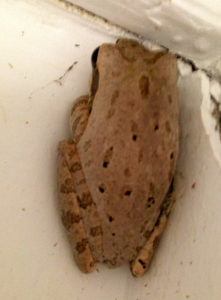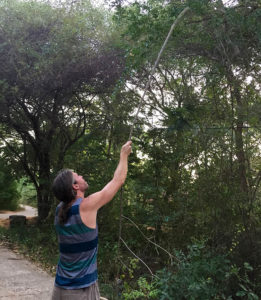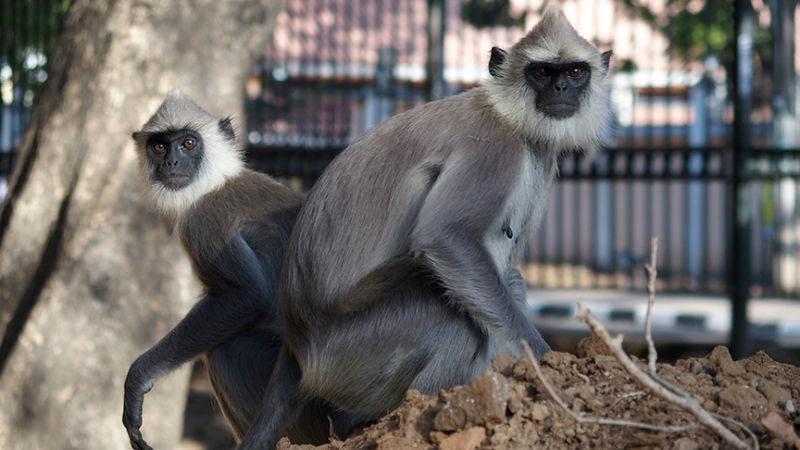The internet makes traveling so much easier than it was in the past but it also can lead one astray. I rely heavily on it to research places for us to go. There’s frequently a traveler trail that we could very easily follow but for a variety of reasons that is rarely the best choice for us. Most of our best experiences have been in places that were not a major stop for the throngs of global backpackers. It can take a little digging to find truly interesting cultural encounters.
In the case of Kataragama, I thought that I had found one of these special places, based on what I’d read on the internet. It did turn out to be special but not quite in the way I expected. Silly me, having expectations. Kataragama is a very small town that exists mostly because of its religious importance. The sacred grounds are home to a temple in honor of the HIndu god Kataragama (also worshipped by many Sri Lankan Buddhists) and there is also a mosque nearby. The town is a pilgrimage destination for people of many religions from all over Sri Lanka. There is a pooja, or ritual ceremony of worship and offering, two or three times a day and I thought it would be pretty interesting to witness one of these. I’d read some descriptions on the internet which suggested that there would be large numbers of people making their offerings, elaborate music, costumes, and dancing somewhat like a whirling dervish, fire dancing, and if we were lucky, there might be a few people walking on hot coals or shoving large hooks through their skin to demonstrate that their devotion to Lord Kataragama protects them from pain.
We went pretty far out of the way to get to this town and because most of the rooms available online were very overpriced we booked a room at a place that was about 3 miles away from the small town center. The online description stated that there were free bicycles for guests to use to get into town. No problem. When we got there we were a little surprised by the neighborhood. There was nothing around. No restaurants, supermarkets, or anything to see or do. And of course there were no bicycles for us to use to get into town. They were “being fixed”. I’m pretty sure we wouldn’t have chosen to stay in that location if it weren’t for the bicycles. Oh well. We would have to get a tuk-tuk ride into town and another one back to our place. It wasn’t the end of the world.
One evening we made it into town for the late pooja. We walked around town a little bit, spent some time with some huge monkeys (langurs maybe?), and found some very good food at a local joint that was so inexpensive that it made it painfully obvious how much the tourist oriented restaurants were overcharging. As the sun was setting, we worked our way over to the temple.
People were flooding in, mostly dressed in white, and depositing their shoes outside the gate. At another entrance there was an elephant on the sidewalk and people were feeding it and running around its legs and under its belly. Inside the temple compound there were several things going on. There were stations around a courtyard where a person could choose which forms of worship they wanted to participate in. In one corner people were lighting rows of oil lamps in a small enclosure. Toward the middle, a huge bodhi tree attracted worshippers and some of its sprawling outer branches had crutch-like supports holding them up. The tree is supposedly over 2,000 years old and, if my understanding is correct, was a sapling of the sacred bodhi tree that Siddhartha Gautama (Buddha) sat under when he attained enlightenment. There were a couple of shrines around where people would briefly stop to pay their respects. In the center of the courtyard was the main temple where hundreds of people lined up holding fruit baskets to be presented as offerings while two young boys pulled on a rope to ring a large bell as loud as they could. The procession went on for quite a while. Monkeys wreaked havoc and had sex on top of the ornate walls of the courtyard as if to mock the whole ordeal.
My favorite part of the whole thing was the coconut pit. There was a pit in the ground with a metal barrier rising a few feet from the ground. A person would approach the pit with a coconut, light it on fire, hold it up to their forehead while incanting prayers, and throw the coconut down into the pit as hard as they could. If the coconut broke and splattered in the bottom of the pit, the offering was accepted and the person would supposedly experience good luck for the next year. If it didn’t break the person would be brought bad luck. While the act itself was not difficult, there was a genuine look of determination on people’s faces. Can’t mess this up.
There was no music. No dancing. No colorful costumes. No tests of pain endurance. Maybe these things only happened during the big annual Kataragama festival or maybe they happened on special days. I don’t know. Overall it was interesting but, not being a religious person myself, it wasn’t quite the spectacle that I was hoping for. Probably not worth the trouble we’d gone to in order to be there. After all, people worship in unique ways pretty much everywhere.
Aside from the pooja there wasn’t a whole lot for us to do. It was about 100 degrees outside, humid, dusty, and there were lots of mosquitos, especially in our room. Somehow the mosquitos got inside the mosquito net over our bed so they were trapped inside the net with us all night. Not fun. Fortunately a nice frog named Frida lived in our room with us and kept watch over things from her special spot up on the wall by the door.

On our way into the area we noticed that people had put piles of wood apples (see Sri Lankan Goodies) up for sale in front of their homes so one afternoon we decided to go for a long walk around our guesthouse and maybe find some wood apples. It was actually a beautiful walk through a maze of quiet dirt roads, forest, and rural homes. It turns out that wood apples grow all around and we were able pick them from trees and find them on the ground. The ones we found weren’t always the ideal ripeness so we headed toward the road where we had seen the stacks of them for sale.

For some reason we didn’t see any for sale, I think maybe it was a holiday or something, and as we wandered down the road we saw a lady in front of her house. We said hello and she asked us where we were going, which is what everybody asks us all the time. We told her we were looking for some wood apples and got into a conversation about the local fruits. When she discovered that we liked jackfruit she cut one down from a tree in her yard and cut up a section of it for us to eat. She had a few wood apples for us too and she really wanted us to try another fruit that grew at her parents’ house – beli fruit, so she sent her husband off on the motorbike to fetch some to bring back while we sat there munching on jackfruit. Her two young daughters and grandmother were out there with her and we talked about her family. It didn’t take long for the husband to arrive and he had a bag of beli fruit for us. She cracked one open and it was delicious. By this time we’d been sitting there for quite a while and our hands were a mess from all this juicy sticky fruit. The older daughter brought out a bucket of water, some soap, and a rag for us to wash our hands with. When we finally left we had a big bag full of wood apples, beli fruit, and a big chunk of jackfruit, given to us by this sweet lady. We felt rejuvenated by her kindness.
Somehow this lady was able to take what seemed like a big uncomfortable waste of time and turn it into something special. She never asked us for anything and merely wanted to share her abundance of fruit and spend some time talking with us. By this time we were starting to see a pattern emerge. The best moments of our journey occurred during the simplest and humblest of circumstances and many of our attempts at witnessing cultural attractions turned out to be mentally, physically, and financially draining. The friendliest people would pop up in the most unexpected places so it seemed that making big plans was pointless. There was one last event that we knew we wanted to witness before we left. It was the biggest festival of the year in Sri Lanka – the Kandy Perahera and it took place one day before our flight to India. That meant that we had almost two weeks to kill and we decided to spend that time relaxing on a beach. We would still explore the quiet side streets like we always do but we wouldn’t make any big plans. If any kindred souls were going to come out of the woodwork they would come whether we tried to find them or not. It was beyond our control.
jim@snorkelbandits.com


